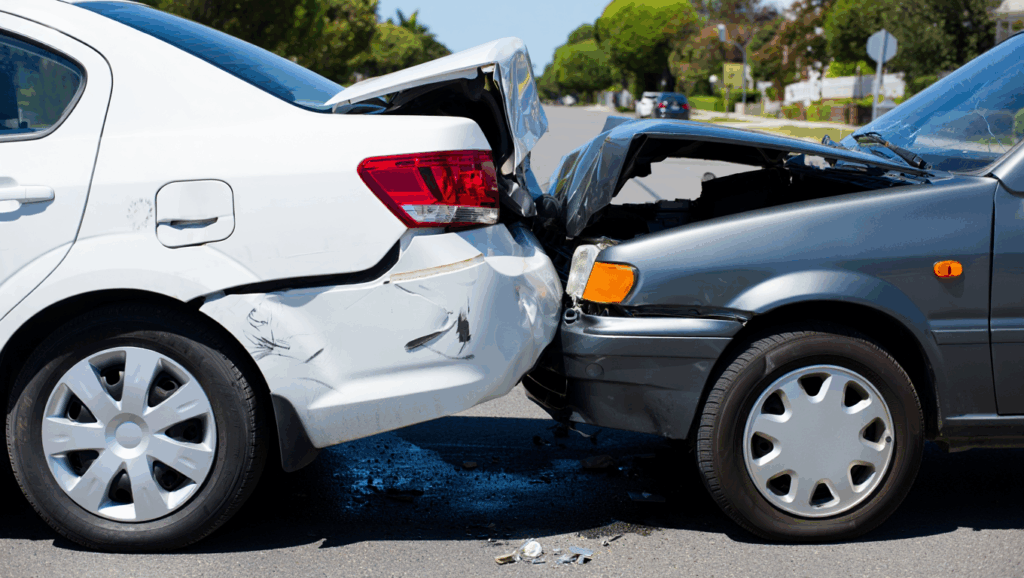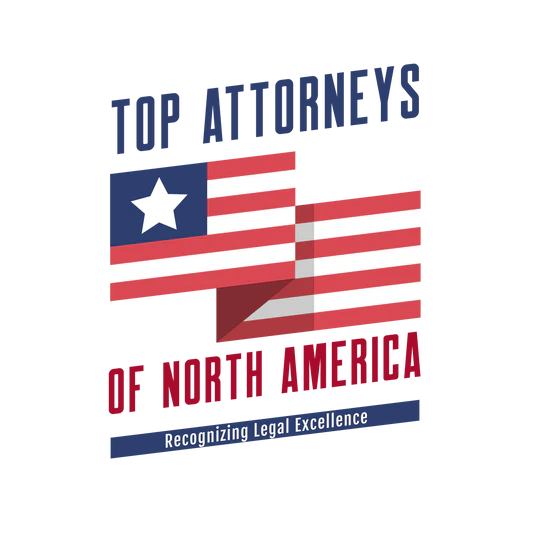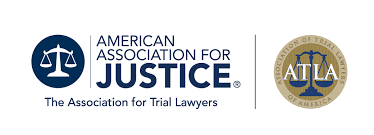Comprehensive Legal Representation for Rear-End Collision Victims Across Manhattan, Brooklyn, Queens, Bronx, Staten Island & Long Island

Rear-end collisions are the most common type of car accident in New York City, accounting for nearly 40% of all traffic accidents across the five boroughs. If you’ve been injured in a rear-end collision, you might think your case is straightforward – after all, isn’t the driver who hits you from behind always at fault? The reality is far more complex, especially when dealing with insurance companies that profit from minimizing your compensation.
At the Law Office of Steven Louros, we’ve recovered millions of dollars for rear-end collision victims throughout NYC, including substantial settlements for clients who speak Mandarin, Cantonese, Korean, and Spanish. With over 40 years of experience and a proven track record of over $500 million in verdicts and settlements, we understand the unique challenges that rear-end collision cases present in New York’s complex legal and insurance landscape.
Recent Rear-End Collision Results:
- $1.2 Million – Client with herniated discs from FDR Drive rear-end collision
- $875,000 – Korean-speaking client with whiplash and concussion from Queens accident
- $650,000 – Multiple rear-end collision on BQE involving commercial vehicle
Table of Contents
- Understanding Rear-End Collisions in NYC
- NYC Rear-End Collision Statistics & Most Dangerous Areas
- Proving Fault in New York Rear-End Accidents
- Common Rear-End Collision Injuries
- Why “Minor” Rear-End Accidents Cause Major Injuries
- Insurance Company Tactics in Rear-End Claims
- New York No-Fault Law and Rear-End Collisions
- When You Can Sue Beyond No-Fault for Rear-End Injuries
- Evidence Collection for Rear-End Collision Cases
- Multilingual Considerations for NYC’s Diverse Communities
- Compensation Available for Rear-End Collision Victims
- Case Studies: Successful Rear-End Collision Recoveries
- Frequently Asked Questions
- Contact Our NYC Rear-End Collision Legal Team
Understanding Rear-End Collisions in NYC
What Makes Rear-End Collisions So Common in New York City?
New York City’s unique traffic conditions create the perfect storm for rear-end collisions:
Traffic Density: With over 2 million vehicles entering Manhattan daily and average speeds during rush hour dropping below 5 mph in Midtown, stop-and-go traffic creates countless opportunities for rear-end accidents.
Aggressive Driving Culture: NYC’s fast-paced environment encourages tailgating, sudden lane changes, and aggressive acceleration when traffic begins moving – all leading causes of rear-end collisions.
Distracted Driving: Despite New York’s hands-free driving laws, cell phone use remains rampant. Texting, GPS navigation, and phone calls take drivers’ attention away from the vehicle ahead.
Weather Conditions: Rain, snow, and ice dramatically increase stopping distances. Many drivers fail to adjust their following distance for weather conditions, leading to rear-end collisions when traffic suddenly stops.
Construction Zones: NYC’s constant construction creates unexpected traffic pattern changes, sudden stops, and reduced visibility – prime conditions for rear-end accidents.
Types of Rear-End Collisions We Handle
Single Vehicle Rear-End Collisions The most straightforward scenario where one vehicle strikes another from behind. However, fault determination can become complex when factors like sudden stops, mechanical failures, or road hazards are involved.
Chain Reaction Rear-End Collisions Multiple vehicles involved in a series of rear-end impacts. These cases require careful analysis to determine each driver’s liability and which insurance policies apply.
Commercial Vehicle Rear-End Collisions When trucks, delivery vehicles, or buses cause rear-end accidents, the stakes are much higher due to the size differential and commercial insurance policies involved.
Rideshare Rear-End Collisions Uber and Lyft vehicles involved in rear-end collisions present unique insurance complications, especially determining whether the driver was “on duty” at the time of the accident.
NYC Rear-End Collision Statistics & Most Dangerous Areas
Alarming Numbers from NYC’s Streets
According to the NYC Department of Transportation and NYPD collision data:
Annual Rear-End Collision Statistics:
- 78,000+ rear-end collisions occur annually in NYC
- 40% of all reported traffic accidents are rear-end collisions
- Peak times: Monday-Friday, 7-9 AM and 5-7 PM
- Weather factor: 60% increase during rain, 85% increase during snow
Injury Rates:
- 65% of rear-end collisions result in injuries
- 15% result in serious injuries meeting New York’s threshold for lawsuits
- Average emergency room visits: 180 per day citywide for rear-end collision injuries
Most Dangerous Areas for Rear-End Collisions
Manhattan Hotspots:
- FDR Drive (especially near 14th Street and 96th Street exits)
- West Side Highway (construction zones between 14th-34th Streets)
- Cross-town streets during rush hour (14th, 23rd, 34th, 42nd, 57th Streets)
- Brooklyn Bridge approach and Manhattan Bridge entrance
Brooklyn High-Risk Areas:
- Brooklyn-Queens Expressway (BQE) – especially near Atlantic Avenue
- Belt Parkway during morning rush hour
- Flatbush Avenue corridor from Grand Army Plaza to Kings Highway
- Fourth Avenue in Park Slope and Sunset Park
Queens Collision Clusters:
- Long Island Expressway (LIE) between Midtown Tunnel and Grand Central Parkway
- Brooklyn-Queens Expressway near LaGuardia Airport
- Northern Boulevard from Flushing to Astoria
- Van Wyck Expressway near JFK Airport
Bronx Rear-End Accident Zones:
- Cross Bronx Expressway – consistently ranked among NYC’s most dangerous roads
- Major Deegan Expressway during rush hours
- Bruckner Expressway near Hunts Point
- Third Avenue Bridge approaches
Staten Island Problem Areas:
- Verrazzano-Narrows Bridge approach roads
- Staten Island Expressway during beach traffic
- Richmond Avenue commercial corridor
- Hylan Boulevard during weekend traffic
Proving Fault in New York Rear-End Accidents
The “Rear Driver is Always at Fault” Myth
While the rear driver is presumed to be at fault in most rear-end collisions, this presumption can be overcome. New York Vehicle and Traffic Law Section 1129 requires drivers to maintain a safe following distance, but several factors can shift or share liability:
When the Rear Driver May NOT Be at Fault:
Sudden, Unexpected Stops
- Vehicle ahead stops suddenly to avoid hitting a pedestrian
- Driver ahead brakes abruptly due to road hazard
- Lead vehicle stops without justification (not at red light or stop sign)
Mechanical Failures
- Brake light failure on lead vehicle
- Sudden tire blowout causing erratic movement
- Steering or brake system failures
Intentional Actions
- “Brake checking” or road rage incidents
- Fraudulent staged accidents
- Driver backing up unexpectedly
Road Conditions
- Construction zones with inadequate signage
- Ice or debris causing sudden stops
- Traffic signal malfunctions
New York’s Comparative Fault Rule
New York follows a “pure comparative negligence” rule, meaning even if you’re partially at fault, you can still recover damages. Your compensation is reduced by your percentage of fault:
- 80% other driver’s fault: You recover 80% of damages
- 60% other driver’s fault: You recover 60% of damages
- Even 10% other driver’s fault: You can still recover 10% of damages
Evidence Critical for Proving Fault
Physical Evidence:
- Vehicle damage patterns and severity
- Skid mark analysis and length
- Point of impact on both vehicles
- Debris field patterns
Electronic Evidence:
- Traffic camera footage from NYC DOT cameras
- Surveillance video from nearby businesses
- Event data recorders (black boxes) in modern vehicles
- Cell phone records to prove distracted driving
Witness Testimony:
- Other drivers who observed the collision
- Passengers in either vehicle
- Pedestrians who saw the accident
- Emergency responders’ observations
Expert Analysis:
- Accident reconstruction specialists
- Mechanical experts for vehicle defects
- Medical experts for injury documentation
- Economic experts for damage calculations
Common Rear-End Collision Injuries
Why Rear-End Collisions Cause Serious Injuries
The human body is not designed to absorb sudden impact from behind. When struck from the rear, your body experiences two distinct phases of motion that can cause severe injuries:
Phase 1: Forward Acceleration Your vehicle is pushed forward while your body remains stationary for a split second, causing your head and neck to snap backward (hyperextension).
Phase 2: Rebound Effect As your vehicle stops moving, your body continues forward, causing your head and neck to snap forward (hyperflexion).
This “whiplash” motion can occur even in low-speed collisions and cause injuries that may not manifest symptoms for hours or days.
Most Common Rear-End Collision Injuries
Cervical Spine Injuries (Neck)
- Whiplash (cervical strain/sprain): Damage to muscles, ligaments, and tendons
- Herniated discs: When spinal discs rupture or bulge, pressing on nerves
- Facet joint injuries: Damage to small joints connecting vertebrae
- Cervical fractures: Broken bones in the neck vertebrae
Lumbar Spine Injuries (Lower Back)
- Herniated lumbar discs: Often requiring surgery and causing permanent limitations
- Compression fractures: Vertebrae collapse under impact force
- Spinal stenosis: Narrowing of spinal canal causing nerve compression
- Sacroiliac joint dysfunction: Pelvic pain and mobility issues
Traumatic Brain Injuries
- Concussions: From head striking headrest, steering wheel, or airbag
- Coup-contrecoup injuries: Brain injury from impact and rebound
- Post-concussion syndrome: Long-term cognitive and emotional effects
- Chronic traumatic encephalopathy: Progressive brain degeneration
Thoracic and Abdominal Injuries
- Rib fractures: From seatbelt force or steering wheel contact
- Internal organ damage: Liver, spleen, or kidney injuries from seatbelt
- Cardiac contusion: Heart muscle bruising from blunt force
- Pneumothorax: Collapsed lung from rib penetration
Psychological Injuries
- Post-Traumatic Stress Disorder (PTSD): Anxiety about driving or being a passenger
- Depression: From chronic pain and lifestyle limitations
- Anxiety disorders: Panic attacks when in vehicles
- Sleep disorders: Insomnia and nightmares related to the accident
Why “Minor” Rear-End Accidents Cause Major Injuries
The Low-Speed, High-Injury Paradox
Insurance companies often argue that low-speed rear-end collisions cannot cause serious injuries. This is scientifically and medically false. Here’s why:
Biomechanical Reality:
- 5 mph impact: Can generate 5G of force on the human body
- Neck tolerance: Human cervical spine can only withstand 4.5G safely
- Vehicle design: Modern cars are built to withstand impact, but human bodies are not
The “No Damage = No Injury” Fallacy: Modern vehicles are designed with crumple zones and safety features that absorb impact energy while protecting passengers. However, this energy absorption can actually increase the force transmitted to occupants’ bodies.
Delayed Symptom Onset:
- Adrenaline masking: Initial shock can hide pain for hours or days
- Inflammation process: Swelling and stiffness develop 24-72 hours post-accident
- Progressive degeneration: Some injuries worsen over weeks or months
Factors That Increase Injury Risk in Rear-End Collisions
Vehicle Factors:
- Height differential: SUV hitting sedan creates dangerous override situations
- Weight difference: Heavy vehicles cause more damage to lighter ones
- Seat design: Poor headrest positioning increases whiplash risk
- Vehicle age: Older vehicles may lack modern safety features
Human Factors:
- Age: Older adults have less flexible spines and slower healing
- Pre-existing conditions: Arthritis or prior injuries make new injuries worse
- Physical condition: Weak neck muscles provide less protection
- Position in vehicle: Driver vs. passenger positioning affects injury patterns
Accident Factors:
- Surprise element: Unexpected impact prevents muscle bracing
- Head position: Looking to side during impact increases injury risk
- Seatbelt use: While protective overall, can cause chest and abdominal injuries
- Airbag deployment: Can cause burns, fractures, and facial injuries
Insurance Company Tactics in Rear-End Claims
How Insurance Companies Minimize Rear-End Collision Claims
Insurance companies have developed sophisticated strategies to reduce payouts for rear-end collision claims, particularly targeting victims who don’t speak English as their first language:
The “Minimal Damage” Strategy:
- Arguing that minimal vehicle damage means minimal injuries
- Using photos that minimize the appearance of damage
- Claiming modern safety features prevented serious injury
- Ignoring biomechanical evidence about low-speed injuries
The “Pre-Existing Condition” Attack:
- Requesting years of medical records
- Attributing current pain to old injuries or conditions
- Using gaps in medical treatment against you
- Claiming age-related degeneration, not accident trauma
The “Delay in Treatment” Argument:
- Questioning why you didn’t seek immediate medical attention
- Suggesting that delayed treatment means no serious injury
- Ignoring that adrenaline and shock can mask initial pain
- Minimizing the significance of pain that develops days later
Quick Settlement Pressure:
- Offering immediate settlements before the full extent of injuries is known
- Creating artificial time pressure to accept low offers
- Suggesting that waiting will result in no compensation
- Taking advantage of financial pressure from medical bills
Language and Cultural Manipulation Tactics
For Non-English Speakers:
- Conducting interviews without proper interpreters
- Using complex legal language to confuse claimants
- Misrepresenting policy terms and legal rights
- Taking advantage of cultural unfamiliarity with U.S. legal system
Cultural Exploitation:
- Exploiting cultural tendencies toward politeness and non-confrontation
- Using authority figures to pressure settlements
- Playing on fears about immigration status
- Misrepresenting the role of attorneys as “aggressive” or unnecessary
How We Counter Insurance Company Tactics
Comprehensive Documentation:
- Detailed accident scene investigation
- Complete medical examination and ongoing monitoring
- Expert testimony on biomechanics and injury causation
- Economic analysis of lifetime impact
Cultural Protection:
- Native-speaking legal assistants for authentic communication
- Cultural mediators who understand community values
- Translated documents and interpreter services
- Family education about the legal process
Aggressive Advocacy:
- Immediate preservation of evidence
- Expert witness testimony
- Thorough medical documentation
- Strategic litigation when necessary
New York No-Fault Law and Rear-End Collisions
Understanding New York’s No-Fault Insurance System
New York’s no-fault insurance law requires every driver to carry Personal Injury Protection (PIP) coverage, which provides immediate benefits regardless of who caused the accident:
No-Fault Benefits Include:
- Medical expenses: Up to $50,000 per person
- Lost wages: Up to $2,000 per month for up to 3 years
- Essential services: Up to $25 per day for household help
- Death benefits: $2,000 for funeral expenses plus $2,000 monthly to survivors
How No-Fault Applies to Rear-End Collisions
Immediate Coverage: Your own insurance company pays your initial medical bills and lost wages regardless of fault. This allows you to get treatment immediately without waiting for fault determination.
Important Deadlines:
- 30-day rule: You must file for no-fault benefits within 30 days of the accident
- Medical documentation: Regular treatment records are required to maintain benefits
- Work restrictions: You must provide medical proof that you cannot work
Cultural Considerations for No-Fault Claims: Many immigrants from countries without no-fault insurance don’t understand that they must use their own insurance first. We help ensure you:
- File timely no-fault applications
- Understand your rights and obligations
- Receive proper translation of insurance documents
- Navigate the system without jeopardizing your claim
When You Can Sue Beyond No-Fault for Rear-End Injuries
New York’s “Serious Injury” Threshold
While no-fault insurance covers initial expenses, you can sue the at-fault driver for additional compensation if your injuries meet New York’s “serious injury” threshold under Insurance Law Section 5102(d):
Categories of Serious Injury:
- Death
- Dismemberment
- Significant disfigurement
- Fracture
- Loss of a fetus
- Permanent loss of use of a body organ, member, function or system
- Permanent consequential limitation of use of a body organ or member
- Significant limitation of use of a body function or system
- Medically determined injury or impairment of a non-permanent nature that prevents the injured person from performing substantially all of the material acts which constitute such person’s usual and customary daily activities for not less than 90 days during the 180 days immediately following the occurrence of the injury or impairment
How Rear-End Collision Injuries Often Meet the Threshold
Fractures (Category 4):
- Vertebral compression fractures
- Rib fractures from seatbelt force
- Facial fractures from airbag deployment
- Wrist fractures from bracing for impact
Permanent Consequential Limitation (Category 7):
- Herniated discs limiting spinal movement
- Nerve damage affecting arm or leg function
- Chronic pain limiting daily activities
- Post-concussion syndrome affecting cognitive function
Significant Limitation (Category 8):
- Reduced range of motion in neck or back
- Chronic headaches limiting work capacity
- Sleep disorders affecting daily function
- Depression and anxiety limiting social activities
90/180 Day Rule (Category 9):
- Extended recovery periods preventing normal activities
- Inability to work for extended periods
- Limitation in household responsibilities
- Restriction from recreational activities
Proving Your Injuries Meet the Threshold
Medical Documentation Requirements:
- Detailed medical records from treating physicians
- Objective medical findings (MRI, CT scans, X-rays)
- Functional capacity evaluations
- Expert medical testimony
Activity Limitation Evidence:
- Work attendance records and job duty restrictions
- Documentation of missed family and social events
- Physical therapy attendance and progress notes
- Daily activity logs showing limitations
Evidence Collection for Rear-End Collision Cases
Critical Evidence in Rear-End Collision Cases
Immediate Scene Evidence:
- Photographs of all vehicle damage from multiple angles
- Skid mark measurements and patterns
- Debris field documentation
- Road and weather conditions
- Traffic signal and signage status
Electronic Evidence:
- Traffic camera footage: NYC has extensive camera coverage that we can access
- Surveillance video: From nearby businesses, buildings, and intersections
- Event Data Recorders: Modern vehicles record speed, braking, and acceleration data
- Cell phone records: To prove distracted driving by the at-fault party
Witness Information:
- Contact information for all witnesses
- Written or recorded statements when possible
- Social media posts from witnesses
- Professional witnesses (police, EMTs, tow truck drivers)
Medical Evidence:
- Emergency room records and ambulance reports
- Complete medical imaging (X-rays, MRI, CT scans)
- Medical provider treatment notes and recommendations
- Physical therapy and specialist consultation records
Advanced Investigation Techniques
Accident Reconstruction: Our team works with certified accident reconstruction experts who can:
- Calculate vehicle speeds at impact
- Determine the sequence of events leading to collision
- Create demonstrative evidence for trial
- Identify factors that contributed to the accident
Vehicle Inspection:
- Mechanical examination for defects or failures
- Brake system analysis
- Tire condition and tread analysis
- Maintenance record review
Technology Analysis:
- Cell phone forensic examination
- GPS and navigation system data
- Social media timeline analysis
- Vehicle telematics data
Preserving Evidence Quickly
Time-Sensitive Actions:
- Traffic camera footage is often deleted after 30 days
- Surveillance video may be overwritten
- Physical evidence can be lost or destroyed
- Witness memories fade over time
Legal Preservation Notices: We immediately send preservation notices to:
- Insurance companies to preserve claim files
- Businesses to maintain surveillance footage
- Vehicle owners to prevent repairs or disposal
- Government agencies to preserve traffic data
Multilingual Considerations for NYC’s Diverse Communities
Language Barriers in Rear-End Collision Cases
New York City’s incredible diversity means that many rear-end collision victims face additional challenges due to language barriers:
Common Communication Problems:
- Misunderstanding police officers at the accident scene
- Difficulty explaining symptoms to medical providers
- Confusion about insurance procedures and requirements
- Fear of dealing with legal system due to language limitations
Cultural Factors Affecting Cases:
- Different cultural attitudes toward authority figures
- Varying comfort levels with litigation and confrontation
- Family decision-making processes that involve extended relatives
- Religious or cultural beliefs affecting medical treatment decisions
Our Multilingual Approach
Native-Speaking Legal Team:
- Legal assistants born in China and Korea who understand cultural nuances
- Complete translation services for all legal documents
- Interpreter services for all medical appointments and legal proceedings
- Cultural liaisons who help bridge communication gaps
Community Connections:
- Relationships with Chinese, Korean, and Spanish-speaking medical providers
- Connections to community organizations and religious institutions
- Understanding of cultural events and family obligations
- Respect for traditional healing practices alongside Western medicine
Specific Challenges for Different Communities
Chinese-Speaking Clients:
- Concept of “face”: Reluctance to appear confrontational or litigious
- Family hierarchy: Important family decisions require elder consultation
- Traditional medicine: Balancing Western medical treatment with traditional approaches
- Immigration concerns: Fears about interaction with legal system
Korean-Speaking Clients:
- Respect for authority: Tendency to accept insurance company statements without question
- Workplace culture: Pressure to return to work quickly despite injuries
- Community reputation: Concerns about how legal action affects standing in community
- Language precision: Korean concepts that don’t translate directly to English legal terms
Spanish-Speaking Clients:
- Documentation fears: Concerns about immigration status affecting claims
- Extended family impact: Injuries affect large family networks requiring consideration
- Religious factors: Faith-based approach to healing and suffering
- Economic pressure: Immediate need for income may pressure quick settlements
How We Address Cultural Concerns
Education and Explanation:
- Detailed explanation of legal process in native language
- Cultural context for American legal concepts
- Family meetings to ensure everyone understands the process
- Written materials translated and culturally adapted
Respect for Cultural Values:
- Scheduling around cultural and religious observances
- Understanding cultural approaches to pain and injury
- Incorporating family decision-making processes
- Respecting traditional healing alongside legal treatment
Community Integration:
- Working with community leaders when appropriate
- Understanding cultural celebrations and obligations
- Connecting with cultural organizations for support
- Building trust through long-term community relationships
Compensation Available for Rear-End Collision Victims
Economic Damages: Quantifiable Financial Losses
Medical Expenses:
- Emergency room treatment and ambulance costs
- Hospital stays and surgical procedures
- Specialist consultations (orthopedic, neurological, pain management)
- Physical therapy and rehabilitation services
- Prescription medications and medical equipment
- Future medical care and anticipated surgeries
- Alternative medical treatments (acupuncture, chiropractic care)
Lost Income and Economic Impact:
- Wages lost during recovery period
- Reduced earning capacity due to permanent limitations
- Lost overtime, bonuses, and commissions
- Business income losses for self-employed individuals
- Benefits lost due to time away from work
- Vocational retraining costs for career changes
- Retirement account impacts from early withdrawals
Additional Economic Losses:
- Transportation costs for medical appointments
- Home modifications for disability accommodations
- Household services during recovery period
- Child care expenses while receiving treatment
- Property damage to personal items in vehicle
Non-Economic Damages: Pain, Suffering, and Life Impact
Physical Pain and Suffering:
- Chronic pain from herniated discs and nerve damage
- Headaches and migraines following concussion
- Reduced range of motion and physical limitations
- Sleep disturbances and fatigue
- Sexual dysfunction and relationship impacts
Emotional and Psychological Damages:
- Anxiety and fear about driving or being a passenger
- Depression from chronic pain and lifestyle limitations
- Post-traumatic stress disorder from the accident
- Social isolation due to physical limitations
- Loss of enjoyment in previously pleasurable activities
Life Impact Damages:
- Inability to participate in family activities
- Loss of recreational and hobby pursuits
- Reduced quality of intimate relationships
- Career limitations and professional setbacks
- Independence and self-care difficulties
Factors Affecting Compensation Amounts
Injury Severity and Permanence:
- Temporary vs. permanent injuries
- Objective medical findings vs. subjective complaints
- Need for future medical treatment
- Impact on daily living activities
Age and Life Expectancy:
- Younger victims typically receive higher awards for permanent injuries
- Remaining years of earning capacity
- Long-term medical care needs
- Quality of life impact over lifetime
Pre-Accident Health:
- Comparison of before and after medical conditions
- Pre-existing conditions that may be aggravated
- Overall health and fitness level
- Previous injuries or medical treatments
Economic Status:
- Income level and earning capacity
- Education and professional skills
- Career trajectory and advancement potential
- Benefits and retirement planning impact
Typical Compensation Ranges for Rear-End Collisions
Minor Soft Tissue Injuries (Full Recovery Expected):
- Range: $15,000 – $50,000
- Factors: Brief treatment, complete recovery, minimal impact on daily activities
Moderate Injuries (Some Permanent Limitations):
- Range: $50,000 – $250,000
- Factors: Herniated discs, ongoing pain management, work restrictions
Severe Injuries (Significant Permanent Disability):
- Range: $250,000 – $1,000,000+
- Factors: Spinal injuries, traumatic brain injury, major life impact
Catastrophic Injuries (Life-Altering Consequences):
- Range: $1,000,000+
- Factors: Paralysis, severe brain injury, permanent care needs
Case Studies: Successful Rear-End Collision Recoveries
Understanding How We Build Successful Cases
While we cannot share specific settlement amounts without client permission, we can illustrate the types of challenges we’ve successfully overcome in rear-end collision cases throughout NYC’s diverse communities.
Case Example 1: Complex Chain Reaction Collision
Background: A multilingual client was involved in a five-vehicle chain reaction rear-end collision during rush hour traffic.
Challenges:
- Multiple insurance companies involved
- Language barriers complicating medical treatment
- Cultural reluctance to pursue litigation
- Business income losses difficult to document
Our Strategy:
- Native-speaking legal assistant provided cultural liaison services
- Worked with family to explain American legal process
- Retained economic expert to calculate business losses
- Coordinated with multilingual medical specialists
Outcome: Successful recovery allowing client to maintain business and access specialized treatment.
Case Example 2: “Low Impact” Collision with Serious Injuries
Background: Young professional rear-ended while stopped at traffic light, with minimal visible vehicle damage.
Challenges:
- Insurance company argued minimal damage meant no serious injury
- Medical school/work threatened dismissal due to treatment absences
- Financial pressure from medical bills
- Defense argument that young people “recover quickly”
Our Strategy:
- Biomechanical expert testimony on low-speed injury mechanisms
- Documentation of career and education impact
- Comprehensive medical documentation
- Coordination with school/employer for accommodations
Outcome: Substantial settlement allowing completion of education and ongoing medical care.
Case Example 3: Elderly Clients with Pre-Existing Conditions
Background: Elderly couple rear-ended while stopped, with insurance company blaming age and arthritis for complaints.
Challenges:
- Pre-existing medical conditions
- Language barriers in medical treatment
- Fixed income creating settlement pressure
- Cultural unfamiliarity with legal system
Our Strategy:
- Connected with native-language medical providers
- Documented aggravation of pre-existing conditions
- Family education about legal rights
- Showed impact on independence and quality of life
Outcome: Fair compensation allowing continued independence and medical care.
Frequently Asked Questions
General Questions About Rear-End Collisions
Q: Is the rear driver always at fault in a rear-end collision? A: While there’s a strong presumption that the rear driver is at fault, this can be overcome. Factors like sudden stops, mechanical failures, or road hazards can shift liability. We investigate every case thoroughly to determine true fault.
Q: How long do I have to file a lawsuit for a rear-end collision in New York? A: Generally, you have three years from the date of the accident to file a lawsuit. However, you must file for no-fault benefits within 30 days. We recommend contacting an attorney immediately to preserve your rights.
Q: Can I get compensation if I was partially at fault for the rear-end collision? A: Yes. New York follows comparative negligence law, meaning you can recover compensation even if you were partially at fault. Your award is reduced by your percentage of fault.
Q: What if the other driver doesn’t have insurance? A: New York requires uninsured motorist coverage. Your own insurance should cover you through this coverage. We help navigate these claims to ensure maximum recovery.
Questions About Injuries and Medical Treatment
Q: I felt fine after the accident but now have pain. Is it too late to seek medical attention? A: No, it’s not too late. Rear-end collision injuries often have delayed onset due to adrenaline and the inflammatory process. Seek medical attention immediately and document all symptoms.
Q: The insurance company says my car has minimal damage, so I can’t be seriously injured. Is this true? A: This is false. Modern vehicles are designed to absorb impact while protecting passengers, but this can actually increase the force transmitted to your body. Low-speed collisions can cause serious injuries.
Q: How long will my rear-end collision case take? A: Cases typically take 6 months to 2 years, depending on injury severity and insurance company cooperation. We keep you informed throughout the process in your preferred language.
Q: Do I need to use my own doctor, or can the insurance company make me see theirs? A: You have the right to choose your own doctor. Insurance companies may request independent medical examinations, but your treating physician’s opinion carries the most weight.
Questions About Insurance and Compensation
Q: Why is the insurance company offering me a settlement so quickly? A: Insurance companies often make quick, low offers before you understand the full extent of your injuries. Don’t accept any settlement without consulting an experienced attorney.
Q: Will my insurance rates go up if I file a claim after being rear-ended? A: Generally, rates don’t increase when you’re not at fault for an accident. However, insurance practices vary, and this shouldn’t prevent you from seeking the medical care and compensation you need.
Q: What’s the difference between no-fault benefits and a personal injury lawsuit? A: No-fault benefits provide immediate coverage for medical bills and lost wages regardless of fault. A lawsuit allows you to seek additional compensation for pain and suffering if your injuries meet the “serious injury” threshold.
Questions About Language and Cultural Issues
Q: I don’t speak English well. Can I still pursue a rear-end collision claim? A: Absolutely. We provide complete services in Mandarin, Cantonese, Korean, and Spanish. Language barriers do not affect your legal rights to compensation.
Q: My family thinks I shouldn’t sue because it’s not our culture to be confrontational. What should I do? A: Pursuing legal action isn’t about being confrontational—it’s about protecting your rights and ensuring your family’s financial security. We help explain this to family members in culturally appropriate ways.
Q: Will my immigration status affect my ability to get compensation? A: Your immigration status does not affect your right to compensation for injuries. Insurance companies cannot share your information with immigration authorities.
Questions About Legal Representation
Q: How much does it cost to hire a rear-end collision lawyer? A: We work on contingency, meaning you pay nothing unless we win your case. All consultations are free, and we advance all case expenses.
Q: What if I already gave a statement to the insurance company? A: Contact us immediately. While this may complicate your case, experienced attorneys can often overcome problems created by early statements, especially when language barriers were involved.
Q: Can you communicate with family members who don’t speak English? A: Yes, we provide interpreter services for all family members and ensure everyone understands the legal process and their rights.
Contact Our NYC Rear-End Collision Legal Team
Immediate Action Required After Your Rear-End Collision
If you’ve been injured in a rear-end collision in New York City, time is critical. Evidence disappears, witnesses forget details, and insurance companies begin building strategies to minimize your claim immediately.
Don’t let language barriers prevent you from getting the compensation you deserve.
Why Choose the Law Office of Steven Louros for Your Rear-End Collision Case?
Proven Results in Rear-End Collision Cases:
- Over $500 million recovered for injured clients
- Specific experience with rear-end collision cases throughout NYC
- Track record of defeating insurance company minimization tactics
- Success in cases others said were “too minor” for significant recovery
Multilingual Excellence:
- Native-speaking legal assistants from China and Korea
- Complete translation and interpretation services
- Cultural understanding that goes beyond language
- Community connections throughout NYC’s diverse neighborhoods
Comprehensive Legal Strategy:
- Immediate investigation and evidence preservation
- Relationships with medical specialists who understand cultural approaches to pain
- Expert witnesses who can counter insurance company arguments
- Aggressive negotiation backed by trial readiness
Available Languages:
- English
- 中文 (Mandarin Chinese)
- 廣東話 (Cantonese)
- 한국어 (Korean)
- Español (Spanish)
Contact Information:
Phone: (718) 423-0448 | (212) 481-5275
Address: Manhattan: 1261 BROADWAY SUITE 507, New York NY 10001
Office Hours:
- Monday – Friday: 9:00 AM – 6:00 PM
- Saturday: 10:00 AM – 4:00 PM
- Sunday: By appointment
- 24/7 Emergency Consultations Available
Service Areas:
We proudly represent rear-end collision victims throughout:
- Manhattan: All neighborhoods from Battery Park to Harlem
- Brooklyn: Including Chinatown, Sunset Park, and all communities
- Queens: Flushing, Elmhurst, Jackson Heights, and beyond
- The Bronx: All areas including Concourse and Fordham
- Staten Island: Complete borough coverage
- Long Island: Nassau and Suffolk Counties
- Westchester County: All municipalities
What to Bring to Your Consultation:
- Police report (if available)
- Insurance information for all vehicles involved
- Medical records and bills from treatment
- Photos of vehicle damage and the accident scene
- Contact information for witnesses
- Any correspondence from insurance companies
What to Expect:
- Free initial consultation in your preferred language
- Honest assessment of your case’s strengths and challenges
- Clear explanation of your legal rights and options
- No pressure to hire us – the choice is always yours
- Immediate action plan if you decide to proceed
Take Action Today
Rear-end collision injuries can have lasting effects on your life, career, and family. Don’t let insurance companies take advantage of language barriers or cultural unfamiliarity with the legal system.
Call now for your free consultation: (718) 423-0448
Remember:
- You pay nothing unless we win your case
- All consultations are completely free
- We come to you if you’re unable to travel
- Your immigration status doesn’t affect your rights
- Time limits apply to filing claims
We fight to the end for clients across Manhattan, Brooklyn, Queens, The Bronx, Staten Island, and Long Island—providing personalized, results-driven legal care in the language you’re most comfortable speaking.
Contact the Law firm here : https://louroslawny.com/contact-form/
Legal Disclaimer: This content is the exclusive property of the Law Office of Steven Louros and is protected by copyright law. Any unauthorized reproduction, distribution, or use of this material is strictly prohibited and may result in legal action. The information provided on this website is for educational purposes only and does not constitute legal advice. Every rear-end collision case is unique, and past results do not guarantee future outcomes. For specific legal guidance regarding your situation, please contact our office directly for a confidential consultation with one of our experienced attorneys.
The Law Office of Steven Louros has been serving New York City’s diverse communities with distinction, providing aggressive legal representation while respecting cultural values and overcoming language barriers. Our commitment to excellence and client service has made us the trusted choice for rear-end collision victims throughout NYC’s five boroughs and Long Island.
Website: https://louroslawny.com







